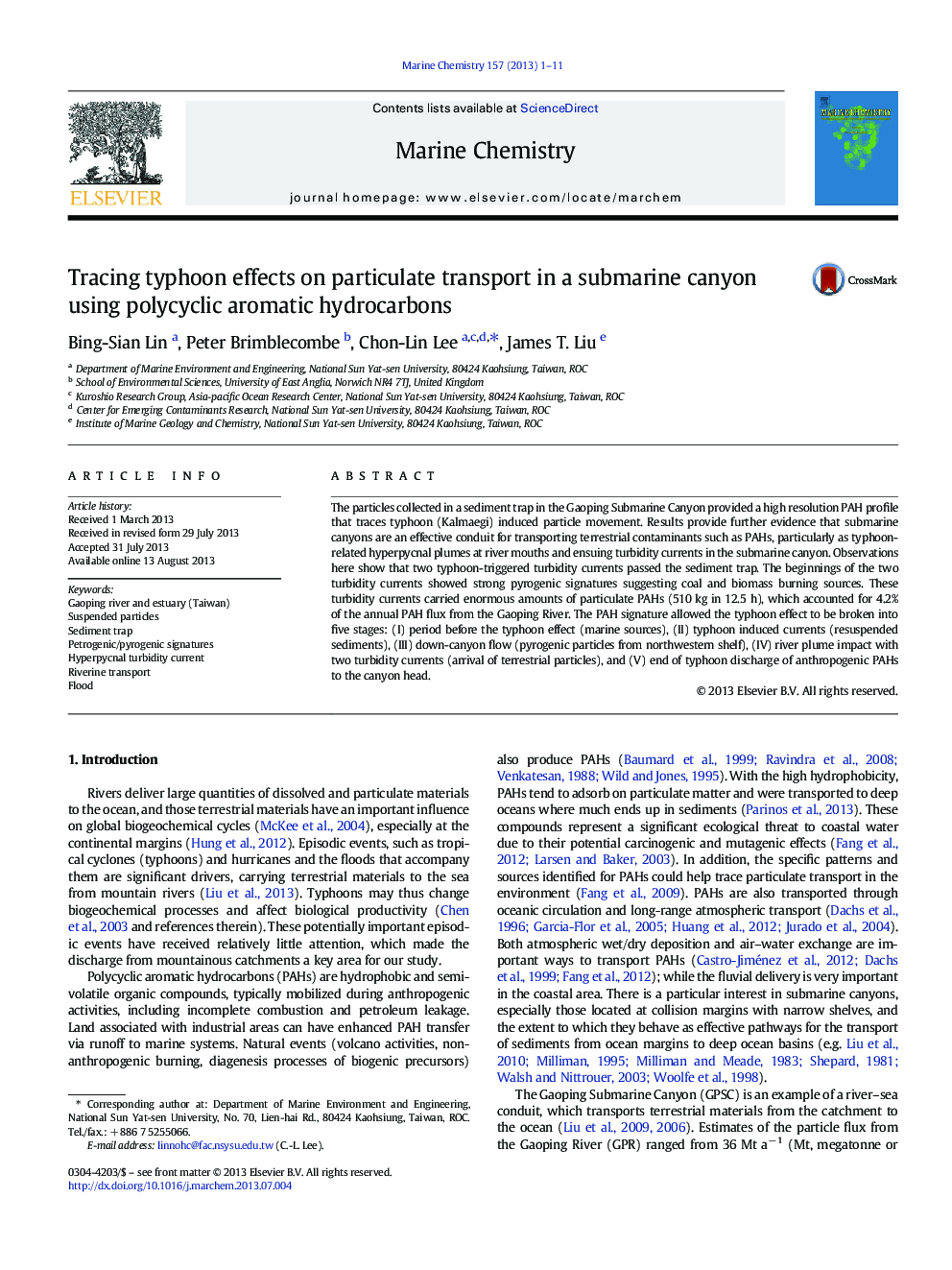| کد مقاله | کد نشریه | سال انتشار | مقاله انگلیسی | نسخه تمام متن |
|---|---|---|---|---|
| 1262991 | 1496678 | 2013 | 11 صفحه PDF | دانلود رایگان |

• PAH defined the role of typhoon in transporting particles through submarine canyon.
• Typhoon induced turbidity currents were identified by PAH signature.
• Biomass burning is the distinct signal in typhoon and turbidity currents.
• After the typhoon the clean background PAH signature of the river was revealed.
The particles collected in a sediment trap in the Gaoping Submarine Canyon provided a high resolution PAH profile that traces typhoon (Kalmaegi) induced particle movement. Results provide further evidence that submarine canyons are an effective conduit for transporting terrestrial contaminants such as PAHs, particularly as typhoon-related hyperpycnal plumes at river mouths and ensuing turbidity currents in the submarine canyon. Observations here show that two typhoon-triggered turbidity currents passed the sediment trap. The beginnings of the two turbidity currents showed strong pyrogenic signatures suggesting coal and biomass burning sources. These turbidity currents carried enormous amounts of particulate PAHs (510 kg in 12.5 h), which accounted for 4.2% of the annual PAH flux from the Gaoping River. The PAH signature allowed the typhoon effect to be broken into five stages: (I) period before the typhoon effect (marine sources), (II) typhoon induced currents (resuspended sediments), (III) down-canyon flow (pyrogenic particles from northwestern shelf), (IV) river plume impact with two turbidity currents (arrival of terrestrial particles), and (V) end of typhoon discharge of anthropogenic PAHs to the canyon head.
Journal: Marine Chemistry - Volume 157, 20 December 2013, Pages 1–11